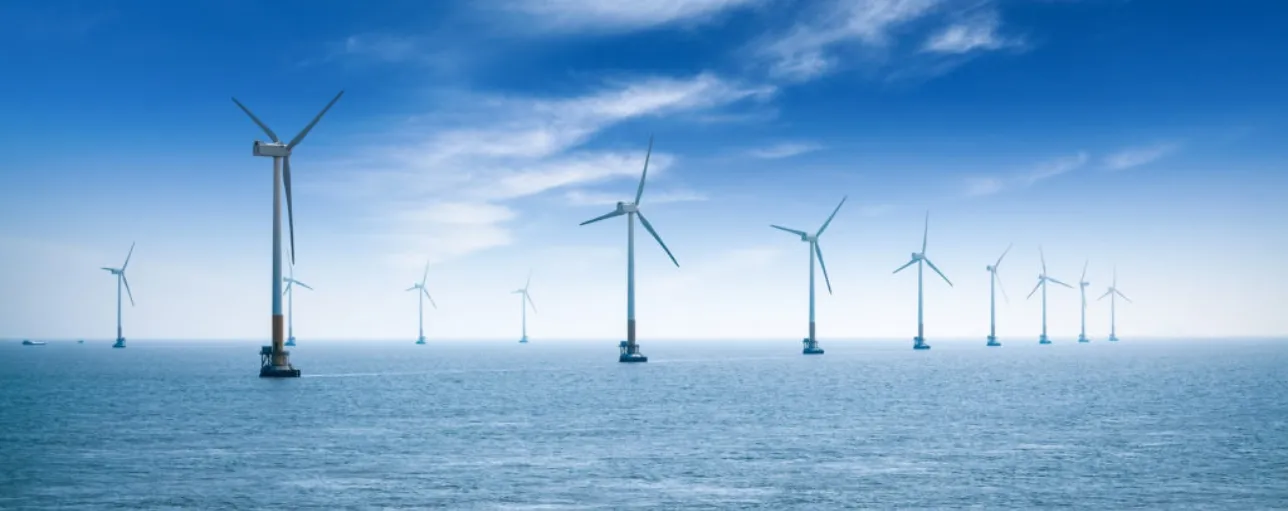On March 29th, the White House made an exciting announcement that will propel offshore wind energy in the U.S.
On March 29th, the White House made an exciting announcement that will propel offshore wind energy development and facilitate thousands of new jobs. This historic announcement will enable a faster energy transition and begin the process of realigning the United States (U.S.) with the goals of the Paris Agreement.
Over the last two decades, offshore wind has grown along the Atlantic coast and has slowly progressed to include two demonstration projects in operation and more than 10 GW of offshore wind capacity in advanced stages of development. The Biden administration’s action plan seeks to put 30 GW of U.S. offshore wind capacity into operation by 2030, creating more than 40,000 direct jobs and 30,000 more in related employment, increasing energy security, and avoiding 78 million metric tons of CO2 emissions per year. This is the equivalent of 16.8 million passenger vehicles per year or electrifying 13.2 million homes per year. The action plan outlines targets, intentions, and specific programs in three areas:
- Policy Direction: The most inspiring and meaningful part of the announcement is the shared goal by the Departments of Interior, Energy, and Commerce to target 30 GW of offshore wind deployed by 2030. This alone is expected to trigger more than $12 billion per year in capital investment coast to coast. To activate this growth, the Bureau of Ocean Energy Management (BOEM) will lease new offshore wind areas in the New York Bight as soon as late 2021. Preliminary indications are that lease auctions will occur in the Fairways North, Fairways South, Hudson North, Hudson South, and Central Bight wind energy areas. Finally, BOEM will commit to advancing permitting timelines for existing offshore projects in development, including the expectation for up to ten additional project environmental reviews later this year and 16 Construction and Operation Plan reviews by 2025.
- Investment: The Department of Energy Loan Programs Office (LPO) will release $3 billion in debt capital available for offshore transmission and wind project developers. In the past, the LPO has provided nearly $1.6 billion in support of onshore wind projects, totaling approximately 1 GW of projects, of which, DNV has due diligence for more than 90% of these financial transactions. Additionally, $230 million of funding has been allocated for port upgrades, to support modernization efforts and create shore-side opportunities which are much needed in many port communities. In order to achieve the Biden administration’s goal, it is expected that a half billion dollars of port upgrades will be completed, 4 to 6 new installation vessels will be built, multiple new turbine and subsea cabling manufacturing facilities will be opened, and trickle down effects will spread throughout the supply chain.
- Research: To support vital research efforts and enhance data-sharing abilities, the National Offshore Wind Research and Development Consortium is announcing $8 million in awards to 15 offshore wind research projects. Additionally, the National Oceanic and Atmospheric Administration (NOAA) is partnering with Ørsted to share physical and biological data from their lease areas. NOAA expects to enter into similar agreements with other developers, and DNV looks forward to collaborating with NOAA and others to provide important data-driven analysis to reduce timelines and costs associated with project assessments. Finally, NOAA and partners are committing to providing nearly $1 million in grants for research to better understand offshore wind benefits to local coastal communities and other stakeholders.
- How to interconnect 15 to 25 individual projects owned by 10 to 15 different organizations into the existing transmission systems along the Atlantic Coast;
- Collaborating with various current ocean users in the project planning, development, and implementation phases to ensure the right level of data-sharing, environmental and social mitigation measures, and considerations for vessel traffic and marine safety; and
- Building enough of a supply chain, quickly enough, of vessels, manufacturing and port capacity, as well as training enough labor resources, to realize 30 GW of offshore wind by 2030, which will entail 7 projects in offshore construction at a given time between 2027 and 2030.
DNV’s broad range of industry experience, subject matter experts, and regional-specific offshore knowledge is currently supporting the U.S. offshore industry on all coasts and the Gulf of Mexico. Working with major project developers; federal agencies such as BOEM, NOAA, and the U.S. Coast Guard; state organizations such as NYSERDA; the investment community and others, DNV is active in many areas of the U.S. industry’s advancement and we look forward to working with you on forthcoming projects. DNV is poised to tackle the challenges and support our customer’s offshore wind activities.
Read the White House Fact Sheet here.

